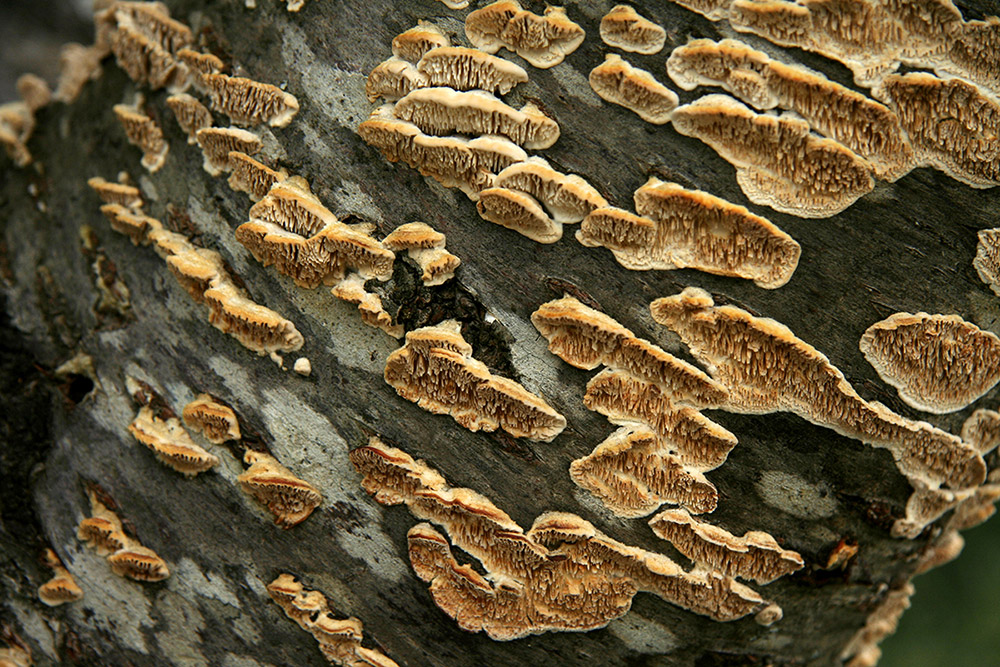
Nearly every tree species is susceptible to some form of fungus infection. Fungus usually likes to live on dead or decaying trees and shrubs. However, it will infect living trees and contribute to the rapid death of the tree. By the time you can physically see any fungus on the outside of the tree it is usually very infected. This is why it is so important for you to regularly inspect your trees for signs of fungus.
Spreading Tree Fungus
Fungus actually lives all around us wherever we live. Dangerous tree fungus can be spread very easily from one tree to another. Fungus can more commonly be carried by birds and insects (photo) from tree to tree. Although they are major culprits, it can also be spread by tools that are used for trimming trees, other animals, and it can even be blown around in the wind. Again, it makes early detection of fungus very important.
Symptoms of Fungal Infection
There can be many signs that a fungal infection is present, but if you don’t know what to look for it won’t really be of much help. If you ever notice little flat mushrooms growing from the base of the tree or in the ground very near to the tree it spells trouble. These are fungal bodies that have developed, and they usually mean the tree is rotting and may be too far gone to save.
Small canker like sores can often times be found on twigs within the tree itself. If there has been pruning done to the tree and you notice any little mushroom like spores coming out from the cut spots, these are a “fruiting body” of the fungus. You might also notice sections of the tree that appear to be wet or soaked with moisture. They may appear as spots anywhere on the tree. These are also a form of fungus that has attached to the tree.
The Trees Roots
Besides the main trunk or branches of your trees, you should also consider the root systems. Though you aren’t necessarily going to dig up the roots to check them, you should look in the grass above the roots to see if you see any fungus or little mushrooms growing there. It is just as easy for fungus to start in the roots as on the trunk itself. If you start to notice spots under the tree that start to feel mushy or like the ground has no support under it, it may be roots dying off from fungal infection.
Troubling Conditions
Though fungi is everywhere, some conditions make trees much more susceptible to infections that others. Trees that are found in humid or very moist climates will generally have some form of fungus on them. Although not all fungus is detrimental to trees, most of it can do damage. Trees that grow under other trees can be more susceptible to getting fungus because they tend to get less sunlight than the much taller trees. As long as the conditions are moist and get less sunlight fungus can go crazy.
Fungus Prevention Tips
When Mother Nature decides it’s time to remove a tree there will be nothing that can stop it. However, while you are still in charge and the tree is still in good health, it is best to keep it that way. It is best to inspect your trees for damage and fungus every couple months. If you don’t see any fungus visible on the bark of the tree, take a closer look. Look between the bark cracks to make sure there isn’t any starting there.
If you do find some you should start treating the tree immediately. If you are not sure where to get the supplies to treat it, you should contact an arborist or tree service right away for help. It may be as simple a fix as spraying the tree down with a special solution several times in order to rid the tree of the problem. Although getting the opinion of a tree professional would probably help you to feel more confident about the treatment.
The tree care guide home page has more articles to help you prevent tree diseases and properly care for your trees and lawn.